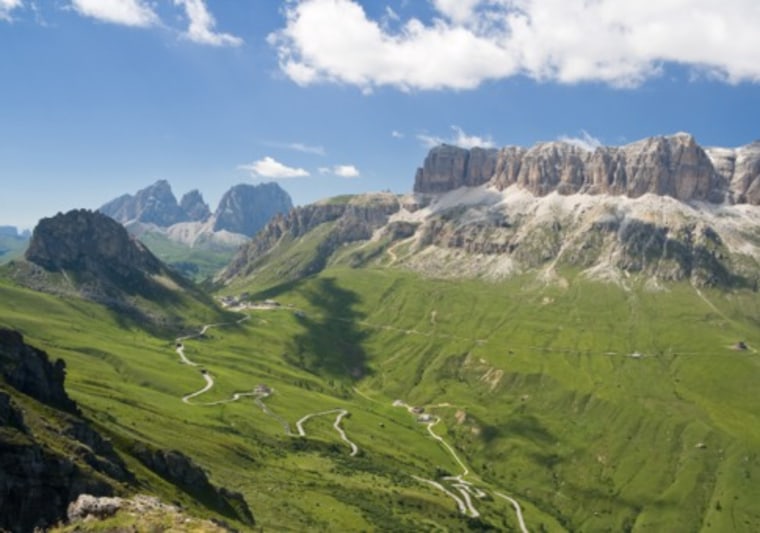Can't make it to the Great Pyramid of Giza, the Galapagos Islands or China's Great Wall? While these remain among the world's most spectacular man-made and natural destinations, there are other sites luring to curious travelers. Among them: 13 added this year to UNESCO's World Heritage List.
They include the Dolomites in Italy, the ruins of Loropeni in Burkina Faso and the sacred city of Cara-Supe in Peru.
Chosen by a committee of the United Nations' Educational, Scientific, and Cultural Organization, World Heritage sites, recommended by the International Union for Conservation of Nature (IUCN), are natural and cultural areas recognized for their universal value to humanity. The selection process involves extensive field work by conservation experts who have, in most cases, dedicated their lives to studying the natural world.
China's Mount Wutai, a five-peaked Buddhist mountain, joins this year's list. Its landscape of Buddhist architecture features 53 monasteries, including the east main hall of Foguang Temple and its life-size clay sculptures. The Ming Dynasty Shuxiang Temple, with 500 statues representing Buddhist stories, is also found here. Mount Wutai is northern China's highest mountain and is unique for its by steep sides and five, open treeless peaks. Temples have been built on the site as early as the 1st century and as recently as the early 20th century.
The royal tombs of the Joseon Dynasty in South Korea, a collection of 40 tombs over 18 locations, was also added as a Worle Heritage Site this year. The tombs, built from 1408 to 1966, are thought to protect ancestral spirits from evil. All face south, toward water, and are protected in the rear by a hill. Structures on the grounds include a T-shaped wooden shrine, royal kitchen and guards' and tombkeepers' homes.
Spain's Tower of Hercules earned a spot on this year's list for its lighthouse and landmark at the entrance of La Coruña harbour in northwestern Spain. The tower was built in the late 1st century A.D. on a nearly 200-foot-tall rock; its 180-foot height comprises three graduated levels. The site also includes a sculpture park, the Monte dos Bicos rock carvings from the Iron Age and a Muslim cemetery.
Being added to the World Heritage List of natural and cultural sites is a bit of a no-win situation: Such recognition will most likely mean more tourism. While this can translate into more preservation and restoration monies, as well as a bite of the $944 billion global tourism industry, it can be overwhelming for the places the UNESCO designation is meant to protect.

To prevent nominating sites unable to handle increased visitorship, the IUCN spends 18 months evaluating each place under consideration, says Tim Badman, special adviser of World Heritage for the union.
"The management of visitors is part in parcel with every nomination we make," he says. "We recommend sites for acceptance if they have integrity, the right size and configuration, but also if they have a good system of protection."
Pallavi Shah, president and chief executive of Our Personal Guest, says she doesn't particularly seek to send clients to UNESCO-designated sites solely because they are on the list, but will include the sites in the itineraries of those headed to an area with a UNESCO site nearby.
For example, for "people going to Southeast Asia, without question Angkor is on the list," she says. "The World Heritage label acts "as a kind of validator on the quality of the experience." Regardless, tourism will certainly come. And that's to be expected, says Badman.
"The sites are there to be celebrated, to be presented to the world," he says, "and tourism is a way for people to really experience and understand what these great places are about."
